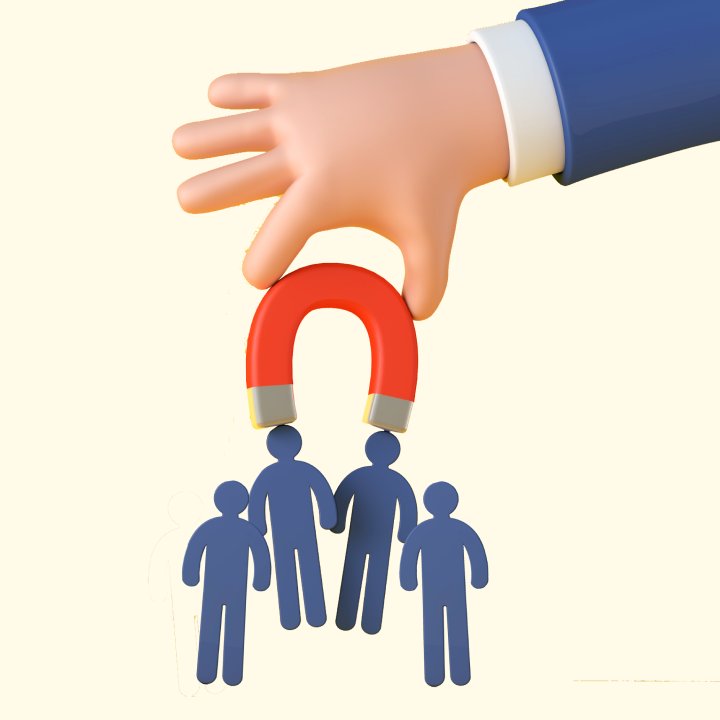What is Customer Acquisition?
Customer acquisition refers to the process of gaining new customers or clients for your business. It involves various marketing and sales strategies designed to attract, engage, and convert potential customers into paying ones. Successful customer acquisition doesn’t just focus on attracting traffic—it’s about turning prospects into long-term, loyal customers who provide value to your business over time.
Key elements of https://casroannual.org include:
- Attracting Leads: Generating interest in your product or service among potential customers.
- Nurturing Relationships: Engaging with prospects to build trust and credibility.
- Conversion: Turning potential customers into paying clients through targeted calls to action.
- Retention: Ensuring that new customers stay loyal and continue to engage with your brand.
Why Customer Acquisition Matters
Business Growth: The more customers you acquire, the more revenue your business generates. Expanding your customer base is a direct path to growing your business and increasing profitability.
Market Share: Acquiring customers helps you capture a larger share of the market. As you gain more customers, your brand becomes more visible and competitive in your industry.
Brand Awareness: Successful customer acquisition strategies increase your brand’s visibility and recognition, making it easier for your company to stand out in a crowded marketplace.
Sustainability: By continually acquiring new customers, you ensure that your business remains viable even as older customers may churn or reduce spending. This keeps your revenue streams consistent.
Customer Insights: As you acquire new customers, you gather valuable data on their behaviors, preferences, and needs. This data can be used to improve your products or services and tailor marketing efforts more effectively.
Key Strategies for Effective Customer Acquisition
To build an effective customer acquisition strategy, businesses must focus on a combination of tactics that attract, engage, and convert leads. Here are some key strategies for acquiring new customers:
1. Inbound Marketing
Inbound marketing focuses on attracting customers through content and experiences that are relevant and helpful to them. Instead of interrupting prospects with ads or cold calls, inbound marketing draws them in through valuable content.
- Content Marketing: Create engaging and informative content such as blog posts, videos, podcasts, and infographics to educate and entertain potential customers. High-quality content builds trust and helps establish your brand as an authority in your industry.
- Search Engine Optimization (SEO): Optimize your content to appear in search engine results, driving organic traffic to your website. By targeting relevant keywords and creating valuable content, you can attract leads who are actively searching for solutions that your business offers.
- Social Media Marketing: Use social media platforms like Facebook, Instagram, LinkedIn, and Twitter to share content, engage with your audience, and build a community. Social media channels are essential for connecting with prospects and growing your brand presence.
- Email Marketing: Build and nurture an email list of prospects through lead magnets, offering free resources like eBooks or webinars in exchange for contact information. Once you have their email addresses, you can nurture relationships with targeted content that encourages conversions.
2. Paid Advertising
While inbound marketing focuses on attracting customers organically, paid advertising can accelerate customer acquisition by putting your brand in front of a larger, targeted audience quickly.
- Google Ads: Running paid search ads on Google allows you to target users actively searching for specific keywords related to your product or service. Google Ads can help drive highly qualified leads to your website.
- Social Media Ads: Platforms like Facebook, Instagram, and LinkedIn offer powerful targeting tools that allow you to display ads to specific demographics, interests, or behaviors. Social media ads can be highly effective for both B2C and B2B customer acquisition.
- Display Ads: Display advertising involves placing banner ads on websites that your target customers are likely to visit. This can help increase brand awareness and drive traffic to your website.
- Retargeting: Retargeting ads serve as reminders to users who have visited your website but did not convert. These ads follow them across other websites and platforms, keeping your brand top of mind and encouraging conversions.
3. Referral Programs
Word-of-mouth marketing is one of the most effective ways to acquire new customers. When your existing customers refer others, it acts as a trusted endorsement. Referral programs incentivize current customers to recommend your brand to friends, family, and colleagues.
- Incentivize Referrals: Offer rewards or discounts for each successful referral, such as discounts on future purchases or exclusive products.
- Simplify the Process: Make the referral process easy by providing customers with a simple link to share with their network. The less friction there is, the more likely customers will share your brand with others.
4. Partnerships and Collaborations
Collaborating with other businesses, influencers, or industry leaders can be a powerful way to reach new audiences and acquire customers. Strategic partnerships allow you to tap into the partner’s established customer base and enhance your credibility.
- Affiliate Marketing: Partner with influencers or affiliate marketers who can promote your products or services to their audience in exchange for a commission on sales.
- Co-Branding: Work with complementary brands on joint marketing efforts such as co-branded events, content, or promotions. This can help both businesses expand their reach and attract new customers.
- Industry Events and Webinars: Collaborate with industry experts or organizations to host webinars or participate in trade shows. These events provide an opportunity to showcase your brand to a targeted audience.
5. Customer-Centric Sales Strategy
Your sales process plays a vital role in converting leads into customers. By focusing on customer needs and building a personalized experience, you can increase your chances of success.
- Consultative Selling: Take a consultative approach by listening to your prospects’ pain points and offering solutions tailored to their specific needs. This builds trust and makes prospects more likely to purchase from you.
- Follow-ups: Consistent and timely follow-ups are critical to customer acquisition. Whether through email, phone calls, or personalized outreach, stay engaged with leads until they are ready to convert.
- Clear Calls to Action: Your website and marketing materials should have clear and compelling calls to action (CTAs) that guide prospects toward the next step in the purchasing journey, whether it’s signing up for a free trial or requesting a quote.
6. Customer Experience and Onboarding
The customer acquisition process doesn’t end with the sale. How you onboard and treat new customers plays a critical role in retaining them and turning them into repeat buyers or advocates.
- Seamless Onboarding: Provide a smooth onboarding process to ensure new customers have a positive first experience with your product or service. This may include tutorials, welcome emails, and dedicated support.
- Excellent Customer Service: Offer exceptional customer service to ensure new customers feel valued. Providing a quick resolution to issues and offering personalized support can lead to customer loyalty and positive reviews.
- Feedback Loops: Ask for feedback from new customers to understand their experience and improve your processes. Satisfied customers are more likely to refer others, contributing to organic customer acquisition.
Measuring Customer Acquisition Success
To determine if your customer acquisition strategies are working, you need to track and measure key metrics:
- Customer Acquisition Cost (CAC): The total cost of acquiring a customer, including marketing, advertising, and sales expenses. A lower CAC indicates more efficient customer acquisition.
- Conversion Rate: The percentage of leads that convert into paying customers. This metric helps assess the effectiveness of your marketing and sales strategies.
- Customer Lifetime Value (CLTV): The total revenue a customer is expected to generate over their lifetime. A high CLTV relative to CAC indicates strong acquisition and retention strategies.
- Return on Investment (ROI): The return you receive from your customer acquisition efforts compared to the costs. A positive ROI means that your customer acquisition activities are generating value for your business.
Conclusion
Customer acquisition is a fundamental process for growing your business and driving revenue. By implementing the right strategies—whether inbound marketing, paid advertising, referral programs, or strategic partnerships—you can attract new customers and turn them into long-term brand advocates. It’s crucial to continuously optimize your customer acquisition efforts and measure success to ensure you’re reaching your target audience effectively. With the right approach, customer acquisition becomes a repeatable, scalable process that fuels your business’s growth.




